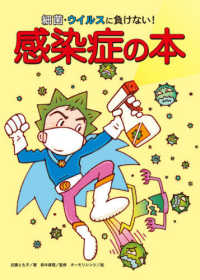- ホーム
- > 洋書
- > 英文書
- > Literary Criticism
Full Description
One of the new forms of prose fiction that emerged in the eighteenth century was the first-person narrative told by things such as coins, coaches, clothes, animals, or insects. This is an ambitious new account of the context in which these "it narratives" became so popular. What does it mean when property declares independence of its owners and begins to move and speak? Jonathan Lamb addresses this and many other questions as he advances a new interpretation of these odd tales, from Defoe, Pope, Swift, Gay, and Sterne, to advertisements, still life paintings, and South Seas journals. Lamb emphasizes the subversive and even nonsensical quality of what things say; their interests are so radically different from ours that we either destroy or worship them. Existing outside systems of exchange and the priorities of civil society, things in fact advertise the dissident obscurity common to slave narratives all the way from Aesop and Phaedrus to Frederick Douglass and Primo Levi, a way of meaning only what is said, never saying what is meant. This is what Defoe's Roxana calls "the Sense of Things," and it is found in sounds, substances, and images rather than conventional signs.
This major work illuminates not only "it narratives," but also eighteenth-century literature, the rise of the novel, and the genealogy of the slave narrative.
Contents
Acknowledgments ix Prologue xi Part One: Property, Personification, and Idols 1 Chapter 1: Owning Things 3 Chapter 2: The Crying of Lost Things 35 Chapter 3: Making Babies in the South Seas 55 Chapter 4: The Growth of Idols 78 Chapter 5: The Rape of the Lock as Still Life 98 Part Two: Persons and Fictions 127 Chapter 6: Locke's Wild Fancies 129 Chapter 7: Fictionality and the Representation of Persons 151 Part Three: Authors and Nonpersons 173 Chapter 8: 'Me and My Ink' 175 Chapter 9: Things as Authors 201 Chapter 10: Authors Owning Nothing 230 Bibliography 253 Index 267







